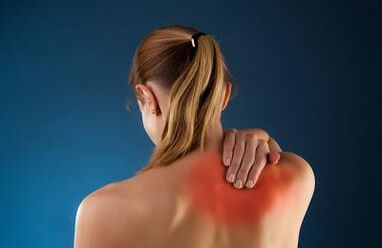
When the back hurts in the scapular region, the majority do not react even to such factors. A slight discomfort passes, but over time a person gets so used to such things that amplifying and adding warning signals does not call for consideration. People don't even realize that sometimesthe disease poses a high health risk.
According to statistics, about 80% of people complain of failures in the region of the spine, lower back, neck.
About 60% are concerned about pain in or below the shoulder blade. Such pathologies greatly complicate movement, limit performance. The causes of sensations are cramps in the skeletal muscle, overstrain. A feeling of pressure in a certain area occurs when diseased organs are located at this level.
The discomfort can be localized:
- on both sides ;
- under the left;
- under the right;
- environment;
- below;
- while coughing;
- when inhaling;
- turning the head;
- from the side of the heart;
- encircle the back and sternum area;
The causes are damage to internal organs, vertebrae, pathology of the nervous system, physical activity, injuries, chronic failures of the body, the musculoskeletal system.
Let's analyze each case of discomfort in more detail.
Pain on both sides
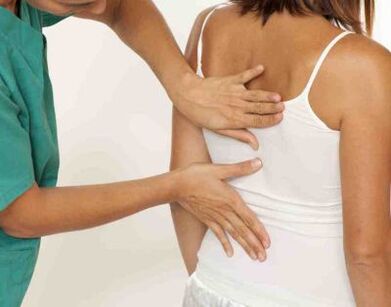
May occur due to intense physical exertion, when muscles and tendons are strained. Unsuccessful turn, movement also leads to a similar state. Symptoms will be swelling, redness of the focus. In a situation with a characteristic crackle, the disease is called scapular crackle. Localization in only two places speaks of bursitis, inflammation of internal organs. Sometimes back pain in the region of the shoulder blades is a sign of tuberculosis, osteomyelitis, in which case the flat bones hurt, under the development of the infection they begin to collapse. The patient has fever and fever. Pneumonia and pleurisy cause pain on palpation, osteochondrosis tends to spread to both sides.
For pulmonary forms, the addition of wheezing, shortness of breath, cough is characteristic.
Character
From acute to moderate with more burns in case of trauma.
Treatment
After the diagnosis, the traumatologist selects the treatment depending on the source of the disease. For injuries, bruises, in the presence of bursitis, nonsteroidal drugs are prescribed. The patient is advised to limit physical activity. Add physiotherapy electrophoresis, magnet, ultrasound, massage. If the back hurts in the region of the shoulder blades as a result of tuberculosis, pneumonia, purulent infection, they are treated in hospital with antibiotics of the fluoroquinolone series and macrolides.
Left pain
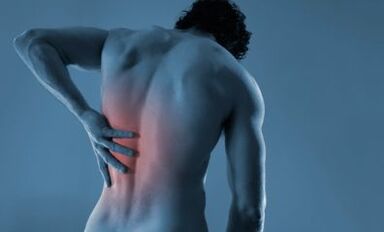
The result of the appearance of diseases can be an ulcer of the gastrointestinal tract. In addition, a person suffers from episodes of nausea, vomiting and belching. Nervous. The vast majority of people suppress their emotions, experience troubles, accumulate problems in themselves. They feel not only pain, but also heaviness in the sternum, a feeling of a lump in the throat. Myocardial infarction causes not only pain under the left shoulder blade, but also burning sensation in the side of the arm, cervical region and jaw.
The provoking factors will be cervical osteochondrosis, intercostal neuralgia, lesions of the pulmonary tract, oncology.
Character
Strong. With an ulcer it is dull, painful, pressing on nervous tension, moving to the chest. Myocardial infarction - burning, gives under the bone. Neuralgia - strong, throbbing, while the lower back is affected. In the presence of a bacteriological and oncological process, it is constant, temperature, fever, chills come together, appetite is suppressed.
Treatment
It is necessary to consult not only a therapist, but also a cardiologist, a gastroenterologist, a vertebrologist, a psychiatrist. Depending on the provoking source, medication will be prescribed. NSAIDs for dystrophy. Gastric ulcer includes antibiotics, anticholinergics. Intercostal destruction of peripheral endings is cured with analgesics, nonsteroidal anti-inflammatory drugs. In addition, antiemetics and antacids are prescribed. In some situations, perforation of the ulcer requires surgery. Infections such as left-sided pneumonia, osteomyelitis involve taking antibiotics.
Oncology is a serious and long-lasting cure with the passage of chemo-procedures.
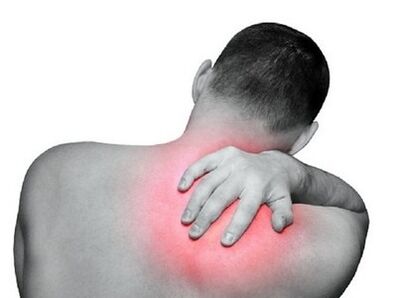
pain on the right
It develops due to muscle spasms of the gallbladder or bile ducts. It causes a stone-like condition that clogs the ducts, contributing to biliary and hepatic colic. The person feels chills, fever. Osteochondrosis is asymptomatic in the initial stage, has a low threshold of sensations. Subdiaphragmatic abscess affects not only the right lobe, but also the shoulder. The patient suffers from fever, unbearable pain. Pyelonephritis, pancreatitis, adhesions after right-sided pneumonia, contusion of the suprascapular nerve, myofascial syndrome are also triggers of the disease. A diseased pancreas, tumors in the liver, kidneys put pressure on the right area.
Hepatic colic has no signals other than painful discomfort.
Character
Dull with cholecystitis. Pancreatitis, pyelonephritis is accompanied by a feeling of tightness and pain with recoil in the lumbar region, upper body. Organ tumors are caused by periodic pain in the right lobe of the body. With burning symptoms, pinching of the nerve roots is possible. Dystrophy of the cervical compartment is recognized by a piercing lumbago. If sharp, an abscess occurs under the diaphragm.
Treatment
The doctor will prescribe NSAID drugs, their property is aimed at eliminating symptoms, reducing inflammation. A good result is given by physiotherapy with a laser, magnet, electrophoresis, manual therapy, exercise therapy. An abscess is treated with a group of substances that inhibit the growth of bacteria. Attacks of pancreatitis require the use of antibiotics, enzymes. Pyelonephritis refers to the penicillin class of drugs. Cholecystitis includes macrolides, analgesics, choleretics.
All three processes indicate adherence to a special diet.
Between the shoulder blades
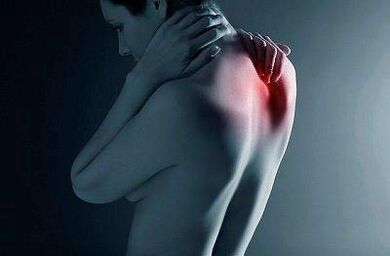
The main circumstances that cause the disease include low activity, sedentary work, gravity, physical exercise. The main failures are osteochondrosis, scoliosis, kyphosis, spondylarthrosis, intervertebral disc herniation in the thorax, cervical and thoracic sciatica, intercostal disc displacement and humeroscapular periarthrosis. The first disease is formed due to dystrophic changes in bone tissue. Scoliosis as a result of a negligent attitude to his health. Improper sitting, standing leads to a change in position, they pull the bone structures to the left and right, thereby changing the posture. Subsequently, it is painful for the patient to sit in an unusual position. Kyphosis occurs due to extremely strong curvature of the spine, round back syndrome appears. Spondylarthrosis also refers to diseases that affect changes in bone structure. A hernia is dangerous because it can compress the spinal cord, nerve fibers are destroyed. This limits patient movement. Sciatica causes nerve root clamping. Symptoms will be pain, swelling and redness of the place, muscle spasms. Scapular osteoarthritis is a degeneration of the tissues surrounding the joint. It is expressed by puffiness, laying the limb behind the back. The patient may have pain in the arm, neck, interscapular territory.
Additional causes will be ischemic heart disease, infections with pathogenic bacteria.
Character
Strong, durable, with a burning sensation in certain situations. Infections are added by the presence of temperature.
Treatment
Osteochondrosis, sciatica, other pathologies of bone destruction are treated with NSAIDs. The use of creams with analgesic properties. Definitely chondroprotectors. Heat therapy, magnet, electrophoresis. The patient is prescribed physical therapy, massage. Scoliosis in the initial stage is treated with exercise therapy, massage. With a hernia, the treatment is conservative, it excludes manual technique and massage!
Antibiotics depending on the pathogen for infections, pneumonia, tuberculosis, poliomyelitis.
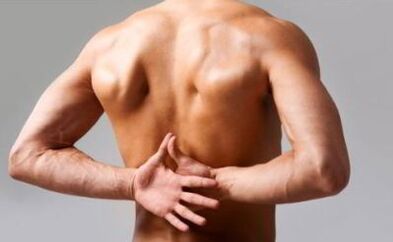
Under the shoulder blade
Causes osteochondrosis. The diseased area hurts, there are pains in the back. Wounds, bruises have swelling, tenderness to palpation. The area is hot and inflamed. High performance, pregnancy are the culprits for pain in the spine and subscapular part. The tubercle bacillus or tuberculosis is an abscess located anywhere. It is characterized by fever, weakness, lack of appetite. Sciatica or nerve root inflammation also radiates to the leg. Bony growths resulting from spondylosis put pressure on the place, spread with discomfort between the ribs, under the sternum and the scapular bones.
Also, constant aching pain under the shoulder blade can be caused by a disease of the internal organs.
Character
Moderate to strong with jerks in right or left leg when nerves are pinched.
Treatment
Degeneration of cartilage, joints, bone mass involves medication using nonsteroidal drugs. Physiotherapy courses, massage, magnetotherapy, ultrasound, laser, electrophoresis. Other actions are proper nutrition, seasonal intake of chondroprotectors. Injuries, bruises include painkillers and ointments that reduce hyperemia, which have absorbable properties. Treatment with physiotherapy, paraffin compresses, potassium iodide electrophoresis, UHF. Cold compresses at home.
Pain when coughing
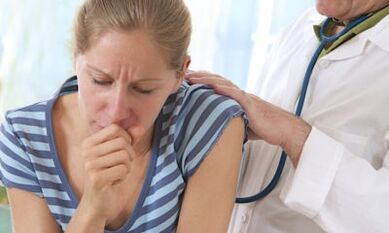
The presence of an alarm signal indicates pleurisy of the spine, chronic bronchitis, pneumonia, muscle fatigue, sciatica, osteochondrosis and even lung cancer. Discomfort extends to the area under the shoulder blades, lower back and spinal apparatus.
In the future, there are difficulties in walking.
Character
Sharp, sharp, intermittent. Increases in the evening.
Treatment
A patient diagnosed with pneumonia is taken to hospital. Conduct drug treatment with antibiotics. Use nonsteroidal analgesic drugs with the production of sciatica, osteochondrosis. A favorable result is given by injection blockages, ultrasound, magnetic procedures, laser, exercise therapy and massage. Homemade compresses with ointments and solutions, herbs.
Cancer usually involves surgery followed by chemotherapy sessions.
When inhaling
The basis is the accumulation of fluid in the pleura or dry pleurisy. The disease of pericarditis develops in the pericardial sac of the pericardium, contributes to the appearance of weakness, subfebrile state, edema, heaviness behind the sternum. Biliary and renal colic give discomfort in the hypochondrium, in flat bones.
Character
Draw, with increased inspiration.
Treatment
Pleurisy is treated with antitussive drugs for dry cough. Banks are placed, exposure to heat. Requires bed rest, immobilization of the affected side. At home, with a gentle form, iodine net, warming compresses. The rehabilitation period is supported by proper nutrition, therapeutic exercises. Cholecystitis colic, pyelonephritis involve the use of nonsteroidal drugs.
The first adds the use of propellant choleretic agents.
Turning your head
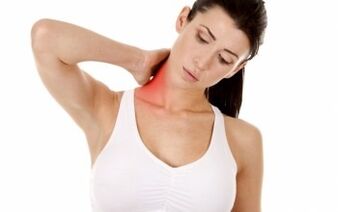
Cervical osteochondrosis, cervicobrachial sciatica, occipital nerve neuralgia. Additional signals will be a creak when turning, swelling, pain in the neck, spinal region. Inability to turn the neck to the right or to the left.
Character
Tightness, pain, aggravated by menstruation.
Treatment
Cervical sciatica and neuralgia are treated with painkillers. A magnet, ultrasound, massage with kneading of the neck muscles are prescribed. At home, horseradish compresses, mustard dressings, honey liners are good.
You should be careful, because. the time of exposure to mustard plasters should be reduced with a diseased heart.
In the region of the heart gives to the shoulder blades
Satellite neuralgia, intervertebral hernia, osteochondrosis, pleurisy, pneumonia, bronchitis. For the latter, the difference is wheezing, shortness of breath, temperature, weakness of the body, lethargy, lack of appetite.
Character
Dull with the addition of heaviness, pressure in and behind the sternum.
Treatment
Pulmonary tract infections are stopped by macrolide antibiotics, bed rest is prescribed.
Violation of nerve fibers is stabilized by NSAIDs, therapeutic ointments, ultrasonic, magnetic, laser physiotherapy, electrophoresis, massage, exercise therapy complex.
When should you see a doctor?
If you have pain of an incomprehensible nature in the shoulder blades, the reasons are different. Accurate diagnosisonly a doctor can issue. He will decide what to do in a particular situation and prescribe competent and effective treatment. The reason for a visit to a specialist will be sharp pains that persist for 3-4 days, fever, numbness in the extremities, fainting, a rapid deterioration in well-being. The sick person is obliged to consult a doctor if he vomits and strong spasms form in the region of the sternum.
In conclusion, it remains to add that the concept of when the back hurts and hurts in the region of the shoulder blades is wide. Because there are so many varieties.
No need for self-medication, it delays the healing process, leads to complications.



































